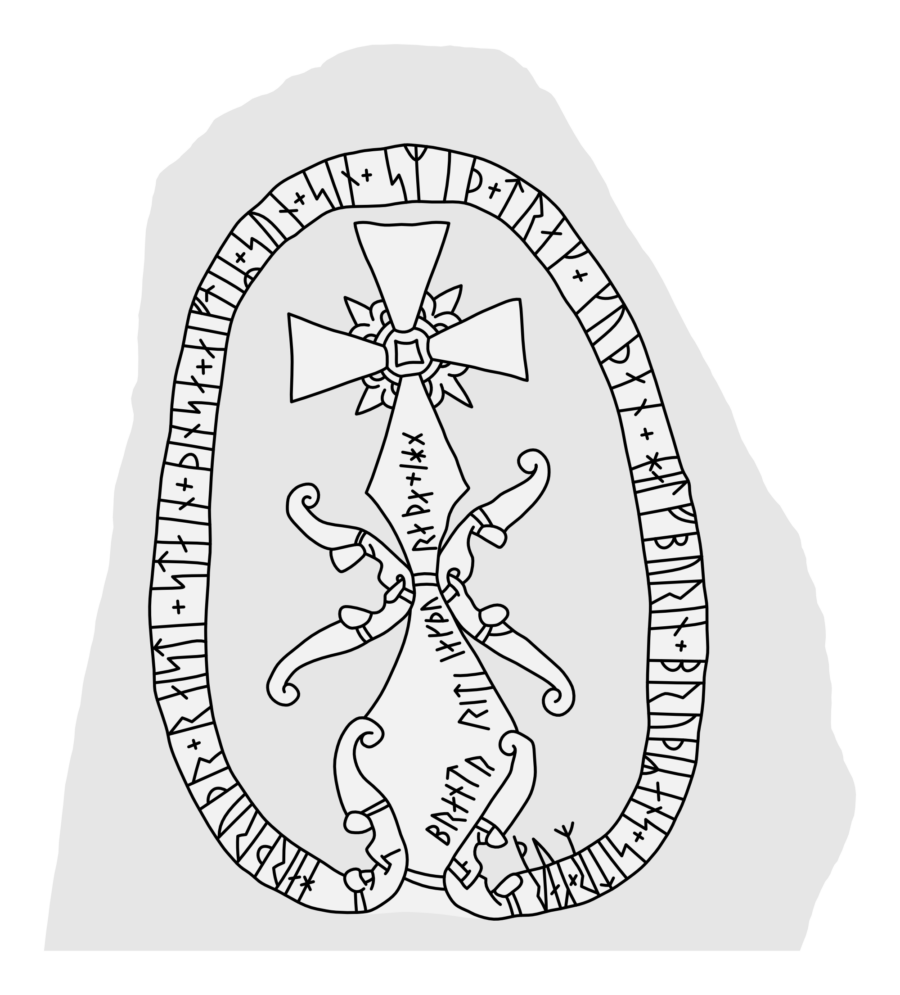
Runestone Öl 28
November 11, 2021
The carvings of the stone are in the runestone style Pr 2 (c. 1020-1050) pertaining to the late Ringerike style.
The inscription is signed by the runemaster Brandr.
The limestone slab is c. 1,5 m tall, 1,3 m wide and 0,1 m thick.
Runic inscription
The first part of the rune text begins at the bottom left end of the rune-ribbon. The second part runs backwards parallel to the first part along the inside of the rune-ribbon at the bottom right end. The third part runs vertically from the base of the cross upwards to the centre.
Runes
[1] ᚼᛅᚱᚦᚱᚢᚦᚱ + ᚱᛅᛁᛋᛏᛁ + ᛋᛏᛅᛁᚾ + ᚦᛁᚾᛋᛅ + ᛅᛁᚠᛏᛁᛦ + ᛋᚢᚾ + ᛋᛁᚾ + ᛋ(ᛘ)ᛁᚦ + ᛏᚱᛅᚴ + ᚴᚢᚦᛅᚾ + ᚼᛅᛚᚠᛒᚢᚱᛁᚾ + ᛒᚱᚢᚦᛁᛦ ᛅᚾᛋ + ᛋᛁᛏᚱ + ᚴᛅᚱ[2]ᚦᚢᛘ [3] ᛒᚱᛅᚾᛏᚱ + ᚱᛁᛏ + ᛁᛅᚴ ᚦᚢ ᚱᛅᚦᛅ + ᚴᚼᚾ
Transliteration
harþruþr + raisti + stain + þinsa + aiftiʀ + sun + sin + s(m)iþ + trak + kuþan + halfburin + bruþiʀ ans + sitr + kar¶þum ¶ brantr + rit – × iak þu raþa + khn
Old Norse
Hærþruðr ræisti stæin þennsa æftiR sun sinn Smið, dræng goðan. Halfborinn,/Halfborinn broðiR hans, sitr Garðum./Garðum Brandr/Brandr. rett/Rett [i] hiogg, þy raða kann.
English
Herthrúðr raised this stone in memory of her son Smiðr, a good valiant man. Halfborinn, his brother, sits in Garðar (Russia). Brandr cut rightly, for whomever can interpret (the runes).
/ Herthrúðr raised this stone in memory of her son Smiðr, a good valiant man. His halfbrother Brandr sits in Garðir. Cut rightly into, for whomever can interpret (the runes).
———
Gårdby, Öland, Sweden
Öl 28